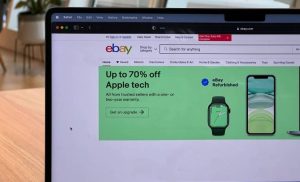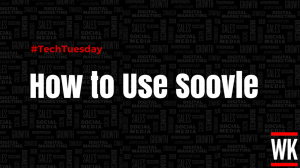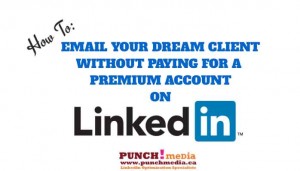— June 30, 2019
The gap between consent and dissent seems to be narrowing in the world of email marketing. How we approach the problem could shape our email marketing future.
The Ground is Not Moving
Let it be known that email marketing is still the highest ROI channel in the digital sphere and will continue to be. Frankly, that’s because it’s intimate. It’s a high-volume monsoon of information that we can harness with our very hands.
And it’s old. Email seems to have been around as long as paper and pen now. And unlike social media, it’s platform independent. Its staying power is far greater than any dot com could ever dream of.
So we can be assured that this channel is not going anywhere. But at the same time, we need to be careful that we don’t spoil our lists with our habits and overindulgence. What is needed is a way to moderate, inform, and build good models for email engagement We believe we have such a piece.
But first, how much is too much?
Too Much Email
Built into the overall protections in email marketing is the dreaded unsubscribe – thanks to the CAN-SPAM act, that link’s required when sending bulk emails in order to help manage the amount and intent of email.
But before we hit that hard wall of omission, what else is a factor in losing attention?
Many people that don’t unsubscribe might use internal filters or traps to capture email, so you never know what is happening on the receiving end.
And to make things more confusing, you might have an email message that receives a high open and a click rate while also accumulating a high unsubscribe rate. What to do then? You’ve just sent the best email of your career, but also lost more people than you ever imagined. What gives?
Yet I think there is something even deeper to the conversation, especially when we focus on the phrasing of our initial question. If you’re asking “how much?” you’re missing the point.
Email is not a function of volume, rather it is a function of attention and value. The amount is irrelevant when you consider the factor of attention.
What I mean by attention is that your open rate is going to be related to how much attention and value you have in your brand and communication overall. Big B2C brands sometimes hold very little value and have low open rates and frequent churn. Contrastingly, some small B2B lists that only include close friends, clients, and colleagues have high open and low churn. It can be a familiarity issue.
A Model for Engagement
Now comes the hard part: determining a model for email engagement that takes these factors into consideration and creates some guiding principles around how you should send email.
When considering the possibilities, I’m initially reminded of the great tome, Database Marketing, that I think should be a required read for the email marketer. It covers many of the foundational elements of how to market to a database (which in all concepts is exactly what email marketing is) in the tidy confines of about 800 pages.
The reality is that when you’re analyzing engagement models, there’s a lot to cover.
In other words, this is a big undertaking that may not be easily digestible for the lay-marketer or the sales professional. But, for the sake of getting the ball rolling, I’ll suggest a simplified model that can help for most B2B businesses.
Factor: Urgency
How much urgency does your communication elicit from your potential recipient? Do they need this information quickly to make a pressing decision? In extreme cases, you could email daily if there is something of an urgency to your communications. Otherwise, your level of urgency could be effectively none, so you should explore other factors. For this person, time is not a factor.
Factor: Uniqueness / Expertise
The second factor is the uniqueness of the communication. Are you one of thirty people communicating the same thing, or do you have something unique to say? Sales and discounts are fairly common as a modality of communication. On the other side of the spectrum, expertise is very unique and contains inherent value. This concept is a bit hard to grasp; everyone thinks they’re unique, but most have failed to really set themselves up as a niche provider in the industry they serve, meaning that they’re really just one of many competitors.
Factor: Value
Value is more difficult to quantify. What is your communication worth? You can begin to answer this by identifying whether or not there is a gap in the readers’ knowledge or understanding of the topic that you’re communicating about – and by analyzing how big the gap is. In addition to generating awareness, value can be measured in the improvement of a person’s mental or physical life by the receipt of this communication. Your communication is only as valuable as the need of the recipient. A coupon only has worth if someone is trying to buy something, an opinion is only as valuable as the person giving it, and expertise is only as valuable as its ability to be recognized.
Factor: Audience
Lastly, the final factor to consider is your understanding of your audience. How much time does your audience spend on email? How critical is it for them as a channel? How many emails do they receive each day? Available bandwidth of the audience should not be unqualified in your campaign considerations.
Putting It All Together
With these four factors we can start to understand how we should approach email. As I reflect on these factors, I’m not sure a clear modality exists in a logical methodology because of the wide array of definitions in the factors. But what we can do is start to put together a few examples that could open a path for future evaluations.
Audience: Business owner, decision maker, 10-50M, product manufacturing.
The audience for this message is a busy business owner. Yet, this audience is actually on email quite a bit. They live on email. So your frequency range is quite high. If you are a commodity broker, you don’t have a ton of uniqueness to communicate, so that could impact your frequency (unless you can do something to create uniqueness). But if you were a consultant in the space, your insight could be seen as valuable at any time, even if it may not always urgent. In that case you might email bi-weekly at most, but if you email too little, your insight might seem limited.
Audience: Real Estate Investors, private
The audience is connected, but they aren’t very frequent email users. When they do check, you’ll want to provide deep information in single bursts. You’d want to create some urgency to get them to engage in the few times they are online. If you don’t have urgency, uniqueness can help. Then again, you need to create value quick and be worth the communication and time. Your window is short, so shorter messages that transition well to in-person communication could be more valuable to them.
These are just two examples, but hopefully they start to assemble the factors that will help you determine how much email and what types of content to send. There is an audience for every type of message; it’s just a matter of finding what works for your audience.
Closing Thoughts
It was my intent to explore the “too much email” conversation by unpacking the broader conversation around understanding your audience and message (and helping you to avoid the baseline of your own personal preferences). If you still need help with this, please reach out, or download this ebook.
The power is in your court to create a compelling email campaign that connects with your audience in the right ways. Is that too much to ask?
Digital & Social Articles on Business 2 Community
(69)
Report Post







